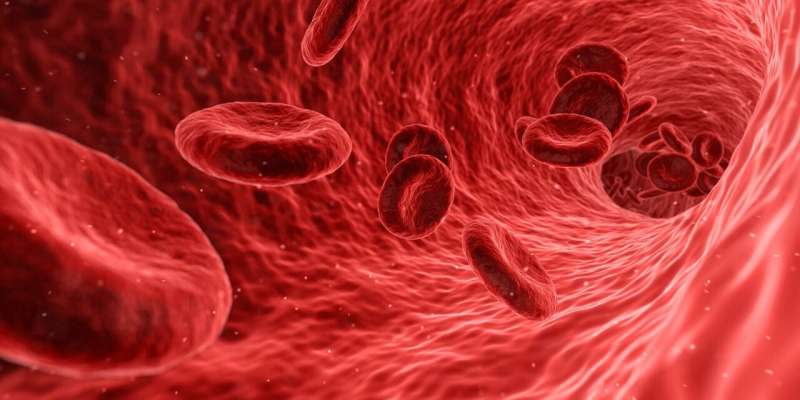Glowing particles in the blood may help diagnose and monitor brain cancer

A chemical that has improved surgeries for brain cancer by making tumor cells fluorescent may also help doctors safely diagnose the disease and monitor its response to treatment, according to a new study led by investigators at Massachusetts General Hospital (MGH).
Brain cancer can be especially difficult to diagnose and to monitor after treatment because methods such as tissue biopsies and radiation can injure the brain. In their EBioMedicine study, researchers tested whether they might develop a less invasive alternative by using a substance that patients drink before brain cancer surgery that turns their tumors bright pink.
The substance is called 5-aminolevulinic acid (5-ALA), and it is an imaging agent approved by the U.S. Food and Drug Administration for use in surgeries for suspected brain cancer. For various reasons, tumor cells in the brain take in ALA-5 while normal brain cells do not. Because all cells release particles called extracellular vesicles (EVs), investigators wondered whether EVs in the blood of patients with brain cancer might turn fluorescent pink when they drink 5-ALA, just as their brain tumors do. If so, blood tests using 5-ALA might be useful for diagnosing brain cancer as well as for monitoring patients for cancer recurrences.
The scientists showed that, in the presence of 5-ALA, brain cancer cells become fluorescent and secrete fluorescent EVs. Also, when ALA-5 was given to mice with and without brain cancer, fluorescent EVs were present only in the circulating blood of the animals with brain cancer. "If there is no tumor, then there are no pink EVs in the blood, making them highly specific to the presence of the brain tumor," said co-senior author Leonora Balaj, Ph.D., an investigator in the department of Neurosurgery at MGH.
Finally, the team collected blood samples from patients before and after they drank 5-ALA prior to undergoing surgery for brain cancer. Patients with fluorescent tumors had a significantly higher number of fluorescent EVs in their blood, and the number of fluorescent EVs was related to the size of a patient's tumor. "This confirms that what we see in blood is directly correlated to the tumor tissue, and it is telling us about the tumor size," said Bob Carter, MD, Ph.D., chief of Neurosurgery at MGH. "Clinically, there is a major need for minimally invasive diagnosis of brain cancer and characterizing circulating tumor-specific fluorescent EVs provides a window into the primary tumor's presence and status."
The strategy might be especially useful in patients with potential cancer recurrences. "At this point, there are challenges in diagnosing a true recurrence and distinguishing it from necrotic tissue, inflammation, and other effects that can lead to what's known as pseudoprogression," noted lead author Pamela Jones, MD, MPH, investigator in the department of Neurosurgery at MGH. "We plan in the future to test the use of 5-ALA in patients who come back with a suspected recurrence to be able to determine if it can also distinguish recurrent tumors versus other inflammatory conditions."
More information: Pamela S. Jones et al, Characterization of plasma-derived protoporphyrin-IX-positive extracellular vesicles following 5-ALA use in patients with malignant glioma, EBioMedicine (2019). DOI: 10.1016/j.ebiom.2019.09.025
















